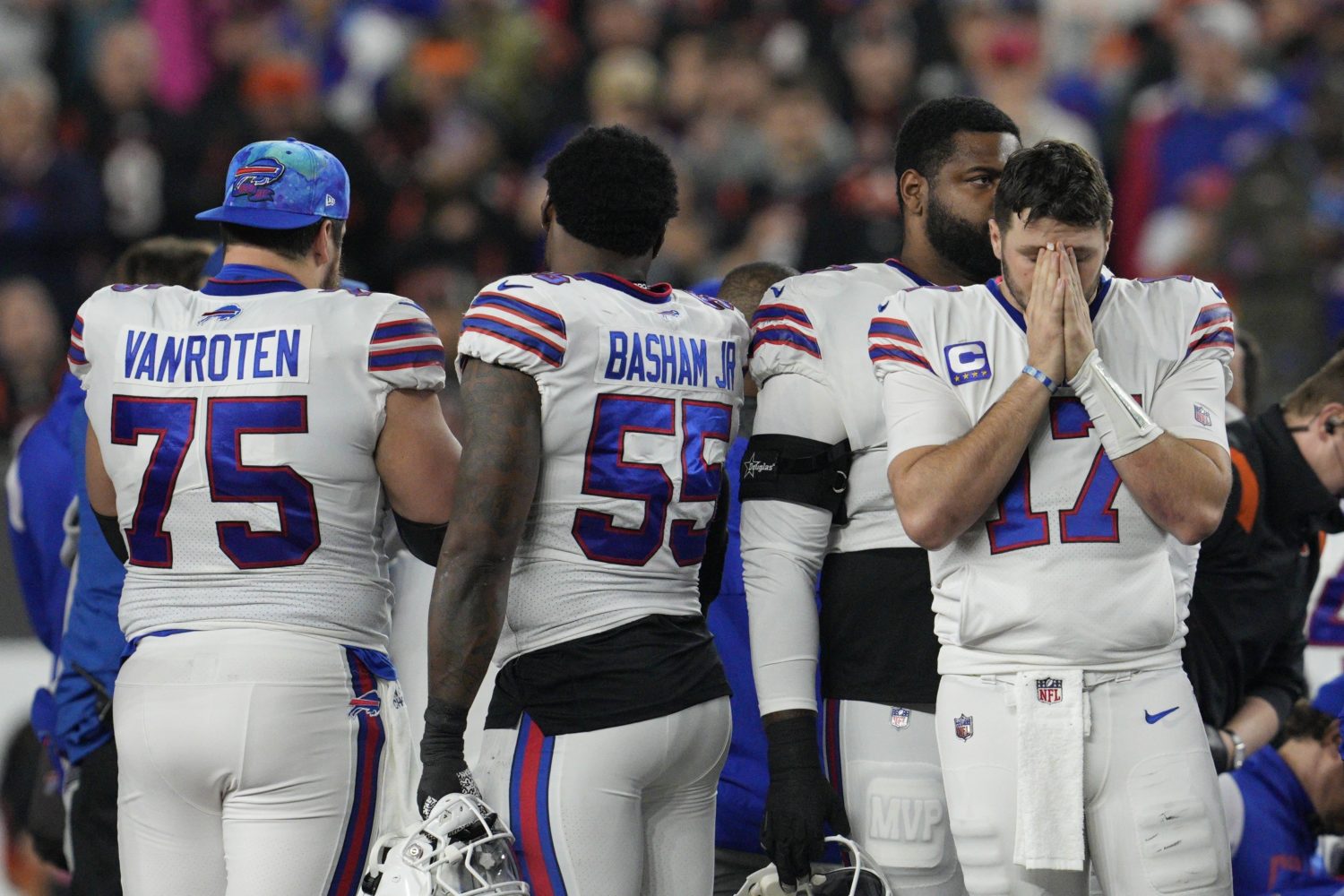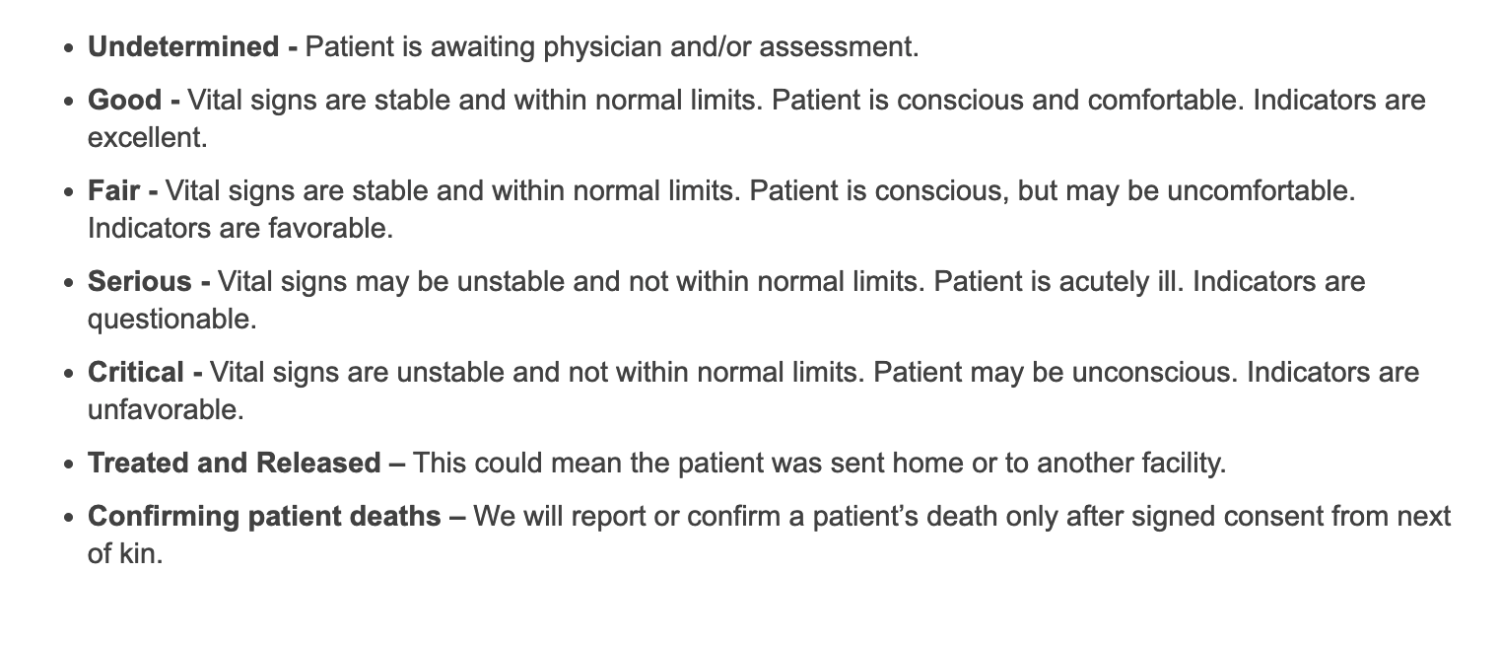Note: ESPN’s commentators were forced to deal with the sudden and shocking pivot from sports story to news story after Buffalo Bills safety Damar Hamlin collapsed on the field during “Monday Night Football,” stunning players, coaches and fans. Read the story here.
This is a time when journalists should be careful about the words they use to describe Damar Hamlin’s condition. HIPAA laws and American Hospital Association guidelines explain the words that healthcare providers use to describe a patient’s condition. The words have specific meanings.
The AHA’s “General Guide” adds: “‘Stable’ should not be used as a condition. “Stable” is also a term that the AHA says “should not be used in combination with other conditions, which by definition often indicate a patient is unstable.”
Not every hospital uses the same AHA guidelines, but most do. They are after all, guidelines, not rules.
What is Commotio cordis?
Whiile we await an update from the hospital treating Damar Hamlin, physicians, including CNN’s Dr. Sanjay Gupta, said that based on what the game video shows, Hamlin may have suffered Commotio cordis, a bruise to the heart muscle caused by blunt force trauma. It is not a common sports injury, but happens more often in baseball and hockey when a puck or baseball hits a player’s chest. Sometimes the injury does not seem serious at the moment.
The Cleveland Clinic says most victims of Commotio cordis injuries recover but the injury can be fatal. The injury is often associated with falls or car crash injuries. To give you an idea of the kind of impact that causes this condition, the general guideline is that the fall would usually be from a height of 20 feet.
There are several possible causes of his injury, because a defibrillator was used on Hamlin, the speculation focused on issues involving the heart, rather than head injuries.

(Twitter)
Sports surgeon Dr. David Abbasi explains how the condition happens in sports. He says one reason Commotio cordis is so rare is because the victim has to gotten hit at the “upstroke of the T wave” which is the uptick of the heartbeat graph that you might see on a heart monitor.
The American Heart Association says when Commotio ordis occurs, “Collapse is instantaneous or within a few seconds.” Before 1995, when information about the condition was less known, only about 15% of victims survived. Now more than 50% of victims survive.
The treatment can include a temporary pacemaker and medications to maintain blood pressure and heart rate. Depending on the severity of the injury, it could take months to recover.
Researchers from UC San Diego and Atlantic University provide data on the condition:
Commotio cordis plays a distressing role as a leading cause of sudden cardiac death in young athletes. Reported cases remain relatively infrequent (less than 30 cases are reported each year), although it is increasingly recognized. The US Commotio Cordis Registry (Minneapolis, MN) has been established to facilitate the aggregation of information.
Children appear to be at the highest risk for commotio cordis. The mean age reported in the registry is 15 years, and very few cases have been reported above 20 years old. This may be a result of a combination of a thinner chest wall relative to an adult and an increased likelihood to participate in activities where they are likely to be hit in the chest.
Ninety-five percent of reported cases occur in boys, which is likely again a reflection of selection for participation in sports which provides the risk factors necessary for commotio cordis to occur. However, the anatomical differences in the chest wall thickness may also play a role.
The reported survival rate among African Americans is lower than in whites (4% vs. 33%). This may be a result of a higher rate of delayed resuscitation (44% vs. 22%) and less frequent use of automated external defibrillators (AEDs) (4% vs. 8%).
One would expect survival to be similar to other cases of ventricular fibrillation, if not even higher, because of the lack of structural heart disease. While initial cases reported very low survival, a significant increase in reported survival has been noted in recent years, likely due to improved recognition and early treatment. The most recently reported survival rates exceed 50%.
The US Commotio Cordis Registry says it has documented injuries from karate kicks and player impacts in soccer. About one in five of the documented injuries included a player who was wearing padding but it is more common in sports where players do not wear padding.
The NFL under scrutiny
The NFL’s injury protocol has been under scrutiny this year despite the fact that at every NFL game there are more than two dozen medical professionals on hand.
The flashpoint happened in September when Miami Dolphins quarterback Tua Tagovailoa’s head hit the turf hard in two games played in a five-day period. Two months later he took a third brutal hit and kept playing. The day after that game he admitted he had concussion symptoms.
There is an odd connection between those injuries and Monday’s night game. The Sept. 25 game in which Tagovailoa suffer one of those concussions was against the Buffalo Bills. Four days later, Tagovailoa returned to the field for a Thursday night game against the Cincinnati Bengals. Even odder, he was injured a year earlier in a game against the Bills.
Tagavailoa’s concussions changed NFL protocols for ataxia, which is the telltale loss of muscle control after a concussion. Under the new NFL protocol, any player who is diagnosed with ataxia will not be allowed to return to the game.
The NFL says that the 30 medical professionals at every game include:
Unaffiliated Neurotrauma Consultant: Three credentialed neurotrauma consultants, who are unaffiliated with either team, staff the sidelines, monitor the broadcast of the game, and work with the team medical staffs to identify, screen for and diagnose concussions.
Visiting Team Medical Liaisons: When traveling across state lines, every visiting team is required to retain a local board-certified and locally licensed emergency physician, who is typically affiliated with the trauma center nearest the NFL stadium.
Booth ATC Spotters and the Medical Timeout: For all NFL games, two certified athletic trainers — retained by the league and unaffiliated with any NFL teams — observe the game from a booth above the field and monitor the broadcast to identify potential injuries, especially concussions and other head and neck injuries. The booth ATC spotter has the authority to call a medical timeout to permit the medical evaluation of a player who may have suffered a concussion or head injury.
And the NFL says that it provides annual summaries of injuries that inform how it should update its medical protocols. The NFL’s website says:
“Throughout the year, comprehensive NFL player injury data is compiled and analyzed by IQVIA, an independent, third-party company that provides results to the league, the NFLPA and medical and football committees. The NFL then shares this data publicly each year. Guided by the experts at IQVIA, NFL medical committee members identify trends in how, where and when injuries happen, and assess how protocols and rules changes affect player safety. Notably, the 2021 season saw the lowest number of concussions in regular season games for the period of 2015 to 2021. The league has sustained a 25 percent reduction in concussions for each of the past four seasons (2018-2021).”
Donations to Hamlin’s charity skyrocket after his injury
Fans, left stunned by what they witnessed on Monday Night Football, turned to a “Community Toy Drive” established on GoFundMe by Hamlin through his Chasing M’s Foundation. Hamlin wrote about the fund:
“As I embark on my journey to the NFL, I will never forget where I come from and I am committed to using my platform to positively impact the community that raised me. I created The Chasing M’s Foundation as a vehicle that will allow me to deliver that impact, and the first program is the 2020 Community Toy Drive.
This campaign gives you the opportunity to contribute to our first initiative and positively impact children who have been hardest hit by the pandemic. 100% of the funds raised will go toward the purchase of toys for kids in need.
In the 90 minutes after Hamlin left the field in an ambulance, fans contributed more than a half-million dollars to the drive, which had a goal of raising $2,500. As of 12:25 a.m. Tuesday, the fund stood at $1,627,760.









